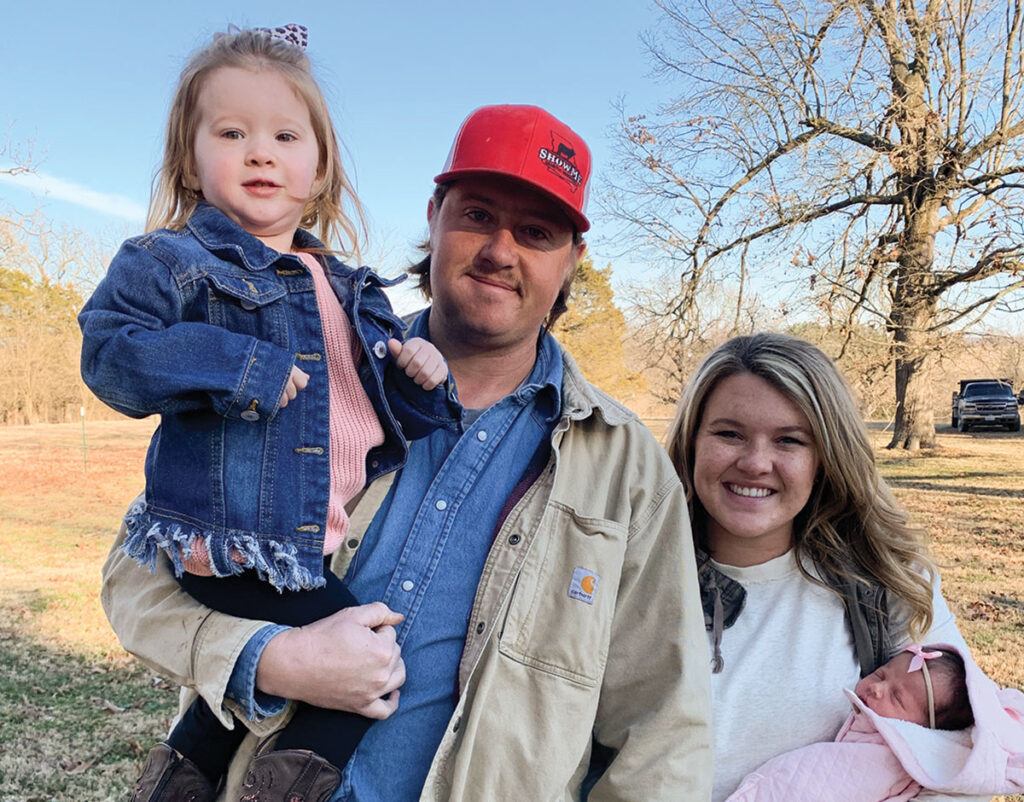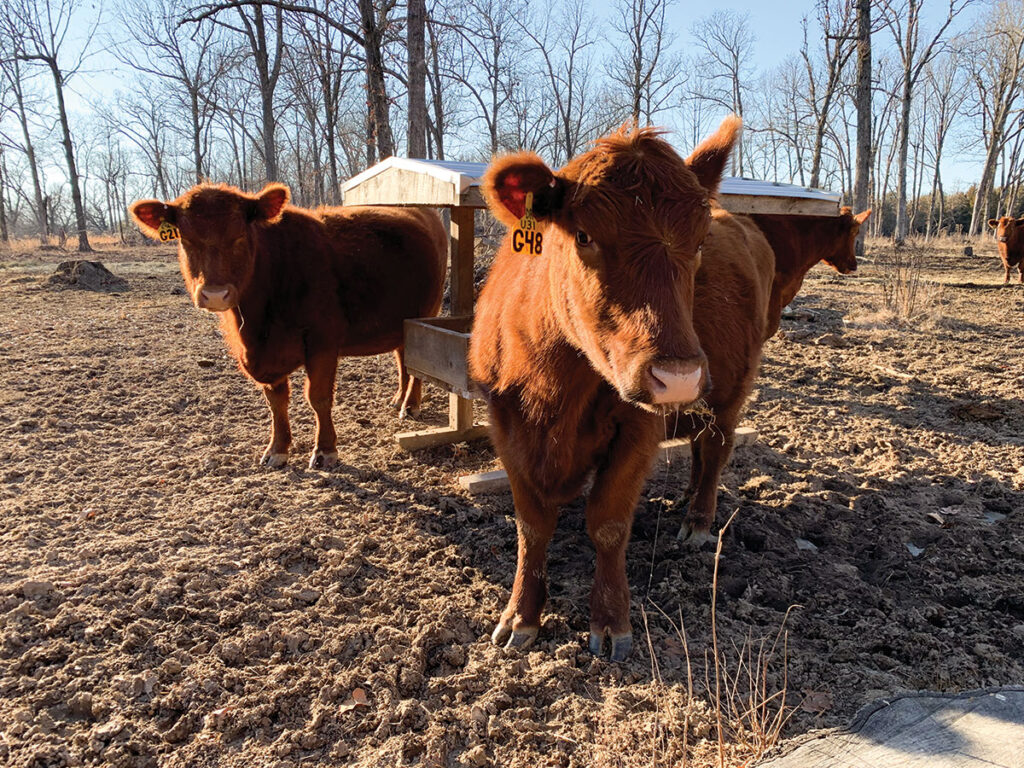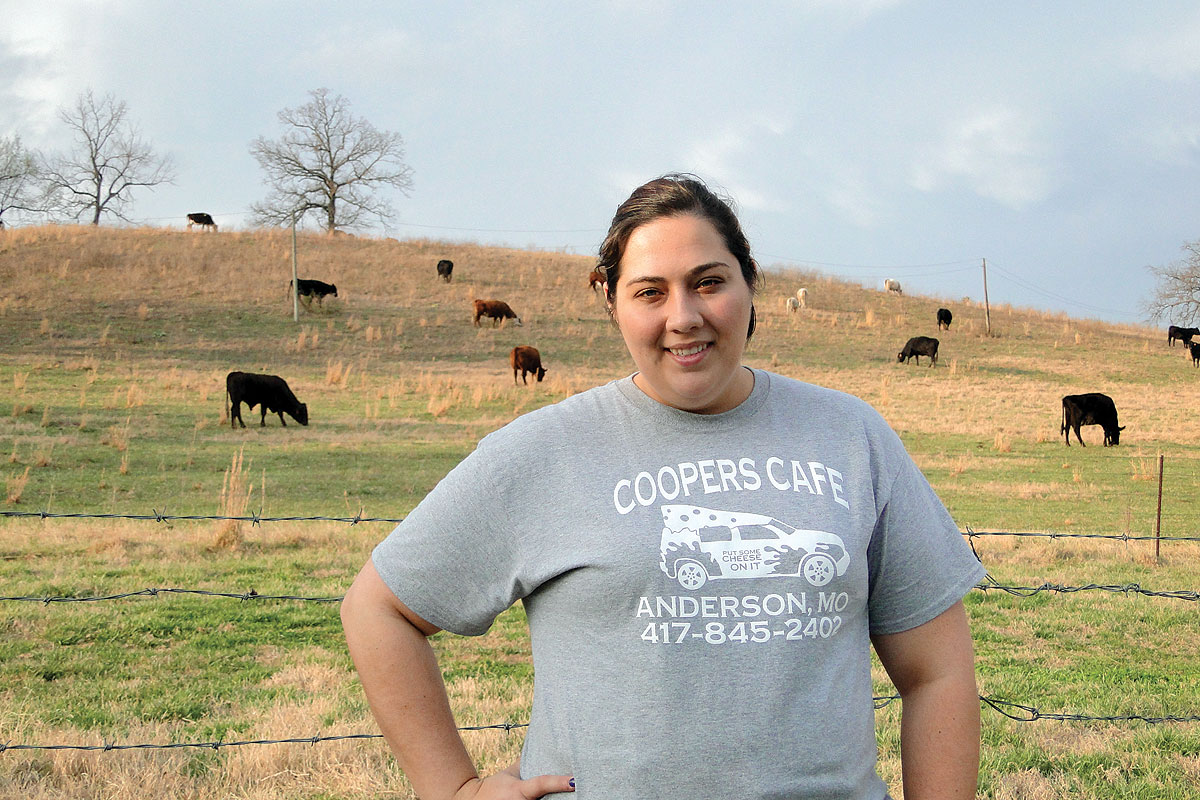
Calvin and Jamie Dryer are working to build a quality Red Angus herd
LOUISBURG, MO. – Calvin and Jamie Dryer are two of many farmers currently navigating the uncertain waters of inflation, steep land prices, and a shaky economy. But this hasn’t stopped the couple from trying new things.
In 2020, the Dryers began the construction of their new home on their 50-acre Louisburg, Mo., farm while both working full-time jobs on top of the Dryer family farming operation. They’ve also added two daughters to their family: 2-year-old Hadley and newborn Whitley. Jamie is a kindergarten teacher at Dallas County R-1 schools, and Calvin works full-time at City Utilities in Springfield, but this hasn’t pruned their ability to help in the Dryer family farming operation.
The whole family helps manage approximately 110 commercial cattle that’s ran on several plots of land. Calvin said his parents have long been involved in agriculture, and Calvin has fond memories of farming while growing up. Calvin is continuing the farming tradition with his daughter, and has purchased Hadley her own gilts.
“My dad used to raise a lot of hogs and I always showed hogs growing up. We want to keep that going for her because it’s a good little income,” Calvin said.

Jamie and Calvin have branched off the commercial cattle operation into a new endeavor. After acquiring five Red Angus heifers from Iowa in 2020, they’ve been working on expanding the herd for a seedstock operation.
Two years in the making and steadily growing, they’re conservatively planning. Calvin said their eventual goal is to acquire more land and run even more cattle, but with the inflated land prices, he’s not sure when or if that will ever become an attainable reality. So, for the time being they’re planning on a smaller scale seedstock operation, focusing on producing exceptional quality and selling bulls.
Calvin said his plans for the breeding program will consist of AI and embryo transferring, as well as providing a quality clean up bull for cover. Calvin said he has years of experience with AI in hogs, but Red Angus seedstock is fairly new territory in comparison. Newer ground, yes, but it has not come without a lot of thought, research and planning.
“Our goal is to have 70 registered mommas and to be able to retain five to 10 cows each year to replace our older heifers, and still be able to sell five to 10 to customers as well,” Calvin explained.
Their herd is kept healthy with worming and vaccinations, Calvin said. He also added they try to let their herd graze on as much native fescue as possible, but said they’re crippled by not having large plots of land for true rotational grazing, something he would like to change when feasible.
“We grind our own feed to feed our feeder calves and my Red Angus bulls. We buy bulk corn and commodities and mix in our grinder. In the future we would like to raise our corn for silage and corn to grind into feed,” Calvin said.
With careful health practices, selective breeding and economics in mind, Calvin said what they’re doing is all about getting more specialized, doing more with less, and getting into a different market by focusing on quality. “We just want to be able to sell a quality product that works for commercial cattlemen,” he said.







